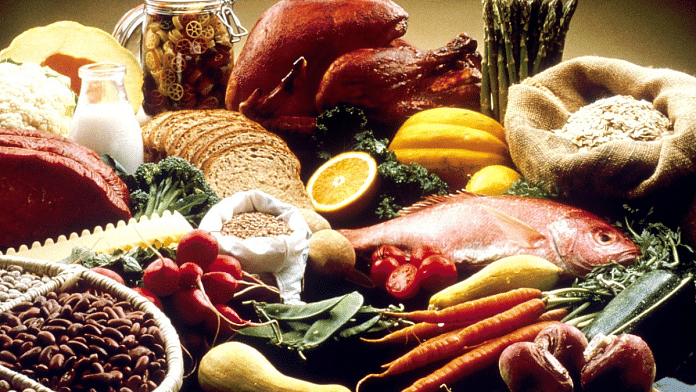New Delhi: You could live up to 10 years longer by simply changing your diet, suggests a new study, according to which healthy dietary habits may significantly impact life expectancy and also ward off non-communicable diseases.
The study, published in the Nature Food journal on 20 November, used data from the UK Biobank and revealed that transitioning from unhealthy eating to recommended diet patterns (Eatwell Guide, in this case) could add 8.9 years to the life of a 40-year-old man and 8.6 years to the life of a 40-year-old woman.
But that’s not all. The study also discovered that following a diet that promotes longevity could have even more benefits, with an increase of 10.8 and 10.4 years for men and women, respectively.
Researchers pointed out that eating whole grains, nuts, and fruits, and avoiding sugary drinks, red meat and refined grains could make the most difference.
While this study focused on the UK, further research could help shape health policies for elsewhere. Read more.
Also Read: What’s common to sharks & humans? We both know what’s bitter, show taste receptor findings in fish
Can you learn without a brain? Brittle stars can
Researchers have found that brittle stars, a kind of echinoderm or sea animal, can learn through classical conditioning — a type of learning that involves associating a stimulus with a response.
This is groundbreaking because brittle stars have no brain to connect their nerves, unlike their relatives, the starfish, which have shown similar learning abilities but have a centralised nervous system.
The new study, published in Behavioural Ecology and Sociobiology journal on 21 November, focused on a species of brittle stars called Ophiocoma echinata, and showed that they could learn to link darkness with food.
The experimental group consisting of 16 brittle stars, which were trained in the dark for 30 minutes, showed learned behaviour by coming out in the dark, even when there was no food.
This finding questions the assumptions about what kind of nervous system is needed for classical conditioning in animals. Read more.
Also Read: Collision with Theia 2.5 bn years ago left its mark on Earth — 2 giant rock structures in its mantle
How chinstrap penguins sleep in short bursts
Chinstrap penguins, which live in Antarctica where they have to be constantly alert for predators, have developed a remarkable way of sleeping. They doze off more than 10,000 times a day, but only for an average of four seconds each time.
Researchers found that these brief naps, which add up to over 11 hours of daily sleep, may serve essential functions for the penguins’ well-being.
A study published in Science journal Thursday examines how this microsleep strategy allows chinstrap penguins to survive and breed in their harsh environment.
For this, the researchers implanted electrodes in 14 penguins and monitored their brain activity for 10 days in Antarctica. They found that the penguins never slept for long periods, and the longest microsleep they recorded was 30 seconds.
The penguins’ microsleeps increased when they were caring for their eggs, suggesting that they were more vigilant then.
This unusual sleep pattern challenges the conventional wisdom about sleep requirements and implies that short and frequent microsleeps could have restorative benefits. Read more.
Also Read: 2022 ‘Marsquake’ mystery solved — here’s why planet shook for 6 hours, and it wasn’t a meteorite
Human cell-based ‘anthrobots’ heal neural tissue
Researchers from the Massachusetts Institute of Technology (MIT) have developed a novel type of tiny robots made from human cells, called “anthrobots,” that can repair damaged neural tissue.
The study, published in Advanced Science journal Thursday, describes how these anthrobots are self-organising structures composed of tracheal cells (cells from the respiratory system) and have potential applications in personalised medicine.
The researchers cultured spheroids of human tracheal skin cells, which are small balls of cells, in a gel for two weeks.
Then they transferred these spheroids to a less sticky solution for another week, making the cilia (the small hairs on the cell surface) migrate to the outside of the spheroids, enhancing their movement. The cilia act as ‘oars’, steering the anthrobots in different shapes and directions.
The scientists placed several anthrobots in a small dish, where they merged to form a ‘superbot.’ They then placed this superbot on a layer of neural tissue that had been injured.
Within just three days, the neural tissue had fully recovered with the help of the superbot, showing the anthrobots’ healing abilities.
The scientists hope that in the future, anthrobots, made from a person’s own tissue, could be used for various medical purposes, such as clearing arteries, breaking up mucus, or delivering drugs. Read more.
(Edited by Richa Mishra)
Also Read: Interlocking logs from 476,000 years ago found in Zamibia 100,000 yrs older than oldest human fossil



